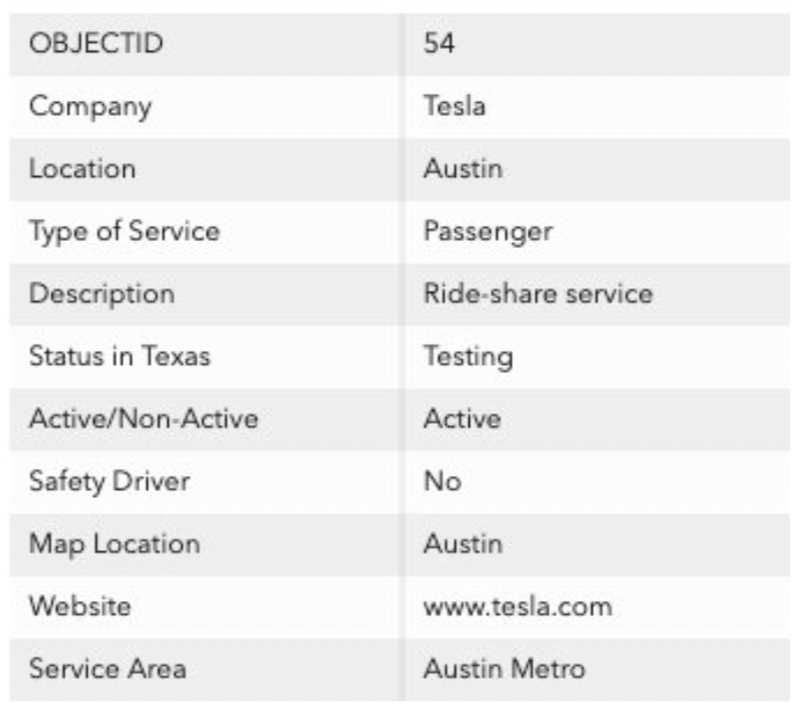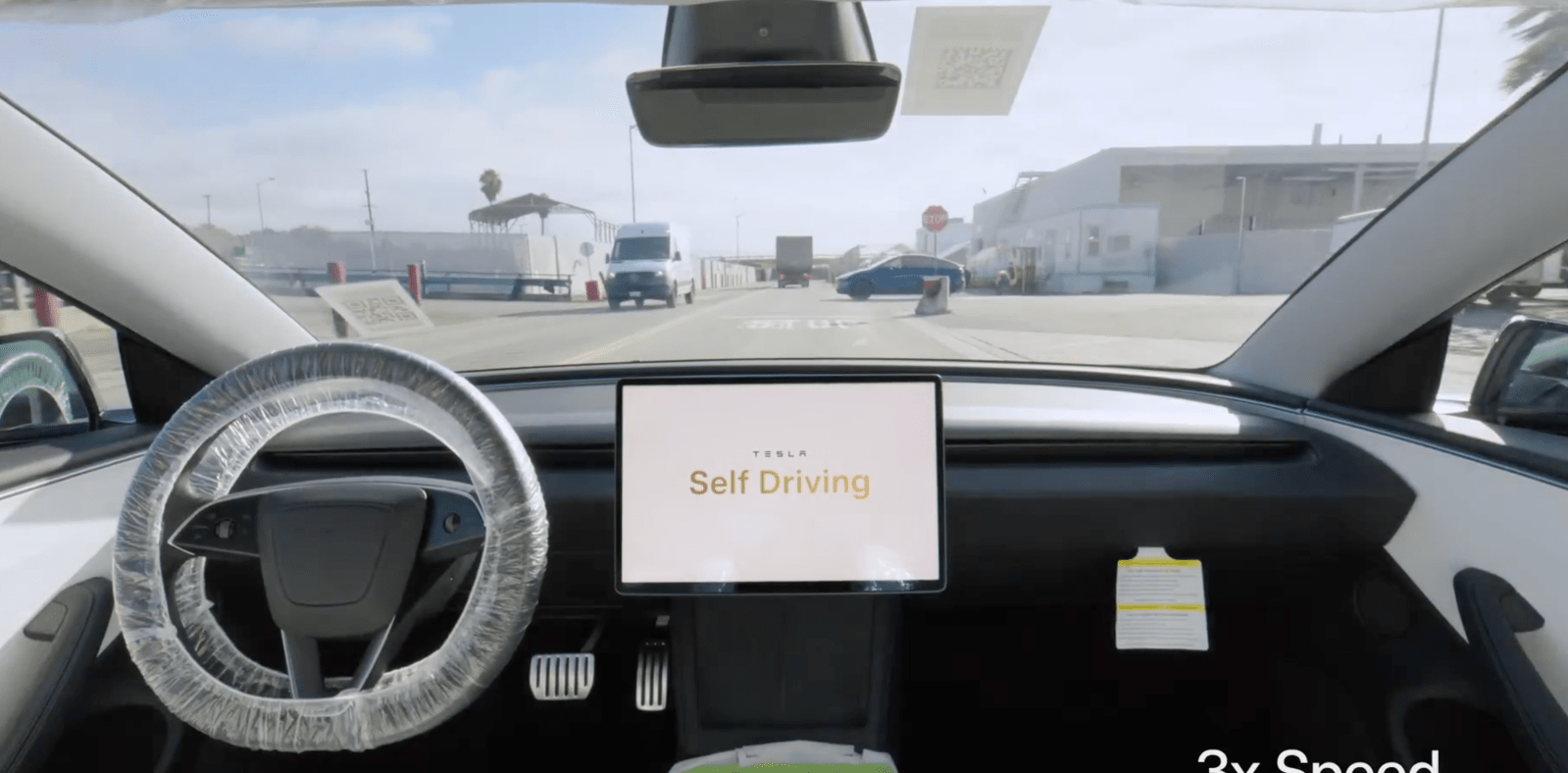Tesla’s upcoming Robotaxi launch in Austin, Texas, is increasingly looking like a game of smoke and mirrors and a dangerous on it.
CEO Elon Musk claims Tesla is “paranoid with certainty”, but it takes risks for optics.
It’s about optics
Musk has taken wrong by self -driving for years. His track record is characterized by unanswered deadlines and broken promises.
He said:
“Our goal is, and I feel good about this goal that we will be able to do a demonstration drive with full autonomy all the way from LA to New York, from home in LA to let us say that you are dropping out in Times Square in New York, and then the car itself walks park, at the end of next year. Without the need for a single touch, including the charger.”
It was in 2016, which is why he claimed it would happen at the end of 2017. Today, by 2025, Tesla is still unable to do so.
Musk has claimed that Tesla would obtain unattended self -driving every year in the last decade. It has become a running trickWith many YouTube videos with his predictions and a wikipedia -page trAcking his unanswered deadlines.
Famous is the predictions that Tesla achieves self -driving “by the end of the year” or “next year.”
This time, Musk has set a clear time for “June” for Tesla to launch his Robotaxi service.
With Waymo, drawing in front of the autonomous driving race, now operating in four cities, delivering over 200,000 paid rides a week, and soon expanding with 2,000 more vehicles, Musk needs a victory to preserve the illusion he has pushed for a while: Tesla is a leader in autonomous driving.
He recently claimed Tesla’s self -driving technology:
No one is once close. There really isn’t a close second. We felt it was a bit of an iPhone moment – you either get it or you don’t, and there’s a massive hole.
This is becoming increasingly difficult to demand in the middle of Waymo’s expansion. Still, Musk believes that Robotaxi launch in Austin will help preserve the illusion, though Waymo has already served as Tesla’s plans in Austin for years in other cities and for months in Austin himself.
Moving the target post
We have often described what Tesla is doing in Austin with its planned “Robotaxi” launch as a movement of the target post.
For years, Tesla has promised unattended self -driving in all its vehicles built since 2016. Musk explicitly said that customers who bought Tesla’s full self -driving package would be able to “go to sleep” at the wheel of their vehicles and wake up in another city.
Now Musk claims that Tesla has “solved” self -driving with its “Robotaxi” launch, but it is very different from prior promises.
Tesla plans to serve its own small internal fleet of vehicles with dedicated software optimized for a geo-fenced area in Austin and supported by “Lots of telecommunications operation.” This is a night-and-day difference compared to implementing unattended self-driving in customer vehicles, as promised since 2016.
Musk is on a record yourself and says, “If you need a geofence area, you don’t really have self -driving.”
Now Musk is on a record and says Tesla is only launching the service in a limited area in Austin and even avoiding certain intersections that Tesla is not sure it can handle:
We will geohensed it. It will not take a tick unless we are very sure it will do well with that cross. Or it will just take a route around this cross.
In addition to geofencing, Tesla also uses telecommunications operation to control vehicles with human operators externally.
We reported last year when Tesla began building a “Tele operation team.”
Despite the fact that Tesla initially planned to launch the Robotaxi service on June 12, and now “tentatively” on June 22, the car manufacturer released a new job list days ago for engineers to help build a low latency telecommunications system to serve its “self-driving” cars and robots.
The use of geofencing and telecommunications operation results in Tesla having the same restrictions as Waymo that Musk claimed means it is “not really self -driving and not scalable for the customer’s fleet as promised by Tesla for years.
‘Paranoid’ about security
Musk claims Tesla is “superparanoid” about security, but you have to take his words for it.
We’ve pointed it out before, but it’s worth repeating: Waymo tested his self-driving vehicles in Austin for six months of security drivers and then for another six months without security drivers before launching his autonomous riding-hailing service in the city.
As for Tesla, it tested its vehicles with security drivers throughout Austin for a few months. Then, at the end of May, Musk announced only weeks before the planned launch that it had begun to test without security drivers.
Despite many people looking for these driverless Tesla -Robotaxis, they were spotted only for the first time last week.
Since then, only two confirmed Tesla vehicles without drivers have been seen by testing.
In addition, several of these vehicles were discovered with Tesla employees in the front passenger seat. While Musk claims there is “no security driver”, these “passengers” are aware at all times and have access to a killing contact to stop the vehicle.
They almost act as “security drivers”, but they are in the passenger seat instead of the driver’s seat.
Tesla is currently still in the “Test” phase based on the list of state regulators, which also mentions “no” security drivers:

To return to the “optics” for a moment, Tesla’s head of self -driving, Ashok Elluswamy, has shared this conveniently cropped image of Tesla’s “Robotaxis” tested in Austin:

The picture crops the passenger seat of the car in front, which would show a Tesla employee, and the driver’s seat for the rear car that would show a driver as seen in Austin over the past week.
There is also no way of knowing exactly what is evaluating these security passengers and remote operators who intervene in self -driving vehicles.
Tesla has never released any intervention or liberation data about its self-driving and ADAS programs despite having used “miles between release” as a metric to track improvements and musk that for years claim that self-driving is a “loose problem” for Tesla.
As we have previously reported, the best available data comes from a crowddsourced effort. Musk has previously shared and wrongly represented the data set in a positive light.
Currently, the data for the combined two latest updates (V13.2.8-9) on Tesla’s latest hardware (HW4), which is reportedly the same hardware used in Tesla’s “Robotaxis” in Austin, currently at 444 miles between critical solutions:

It would entail a high risk of an accident every 444 miles without a driver who is aware and ready to take control at all times.
Tesla is also currently struggling actively in court against organizations trying to access its self -propelled breakdown data.
There are currently efforts to raise concerns about Tesla’s “Robotaxi” development in Austin.
The DAWN project tried to convey the potential danger of Tesla’s upcoming Robotaxi fleet by demonstrating how Tesla vehicles do not stop for school buses with their stop signs activated and can potentially run over children on the latest public monitored full self-driving (FSD) V13.2.9:
Musk has repeatedly emphasized that the vehicles used for the Robotaxi service in Austin are the same as it currently supplies to customers like this one used in this test.
However, they use a new, custom software that is optimized for Austin, with allegedly more parameters, allowing for greater performance. There is still no way to verify this as Tesla has not released any data.
Electek Tag
I can’t lie. I get very concerned about this. I don’t think we can trust Musk or Tesla in their current state to launch this safely.
As I said earlier, I think Teslas FSD would be an incredible product if it was sold as a regular ADAS system, rather than something called “full self-driving”, with the promise that it would eventually be unattended.
Tesla wouldn’t face Significant responsibility for not being able to fulfill its promises to customers, as it has already confirmed to HW3 owners. In addition, security would be improved as drivers would not be so complacent with the technology.
When we talk about these failed promises, they are also what drives Tesla to push for this launch in Austin.
As Waymo’s former long -time CEO John Krafcik said of Tesla’s efforts: “There are many ways to fake a Robotaxi service.”
Musk is in no need for a victory with self-driving, and he saw an opportunity to get one by getting his gullible fanbase of Tesla shareholders excited about a glimpse of his long promised future full of “Tesla Robotaxis.”
As he previously said, he knows well that the way Tesla does this is no more scalable than Waymo, even though the hardware costs per day. Vehicle is lower. Hardware costs are insignificant compared to telecommunications operation, development, insurance and other expenses.
Even with all the smoke and mirrors involved in this project, it becomes clear that Tesla is not even ready for it.
Now the question is whether Musk lets the deadline in June and take another ‘L’ on self -driving, or whether he is pushing for Tesla to launch the potentially dangerous service with lots of restrictions.
Since the federal government in complete shakes and the Texas government is too close to Musk and Tesla, I would not trust the regulators to trade here. Although they probably should.
FTC: We use income that earns Auto -connected links. More.
